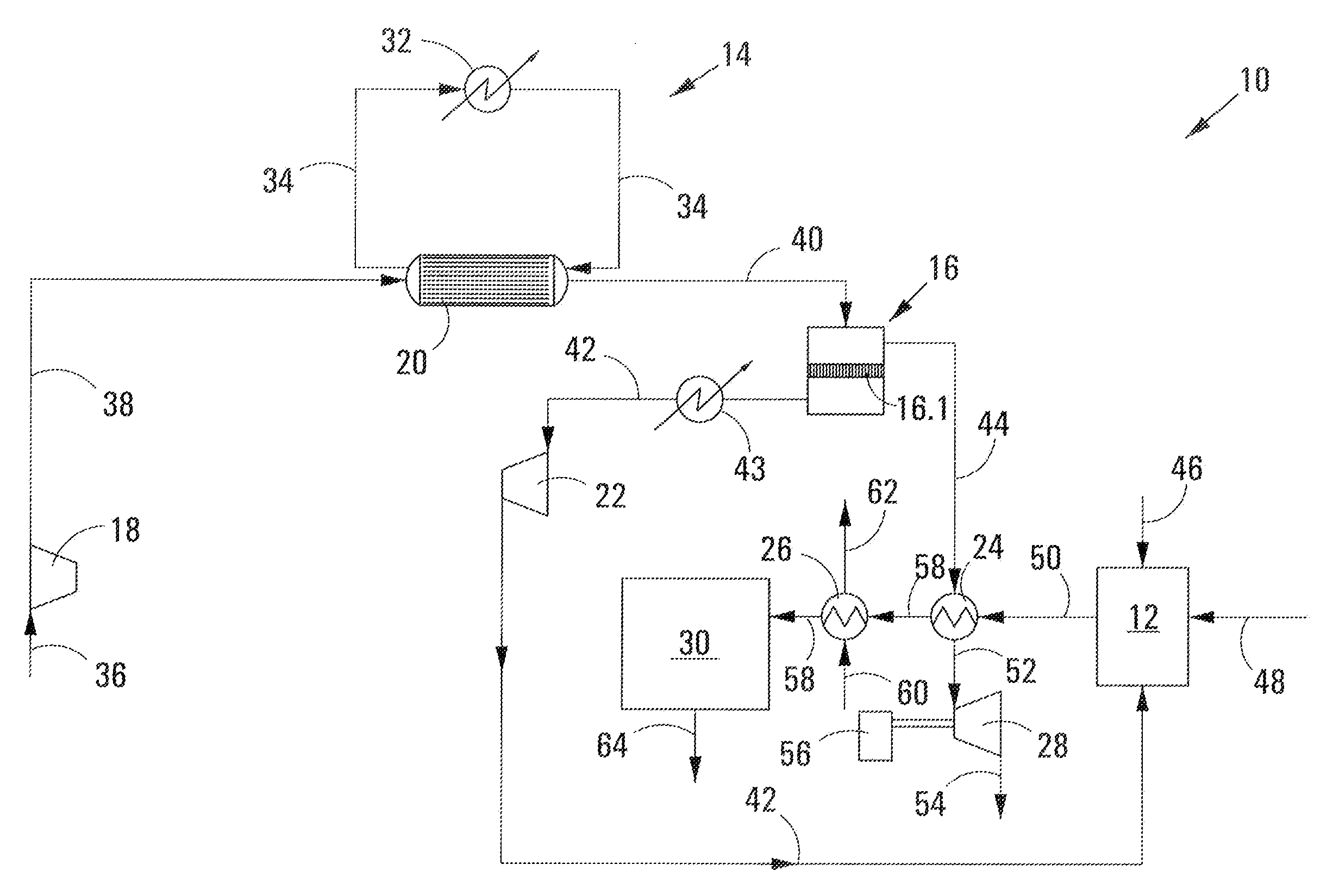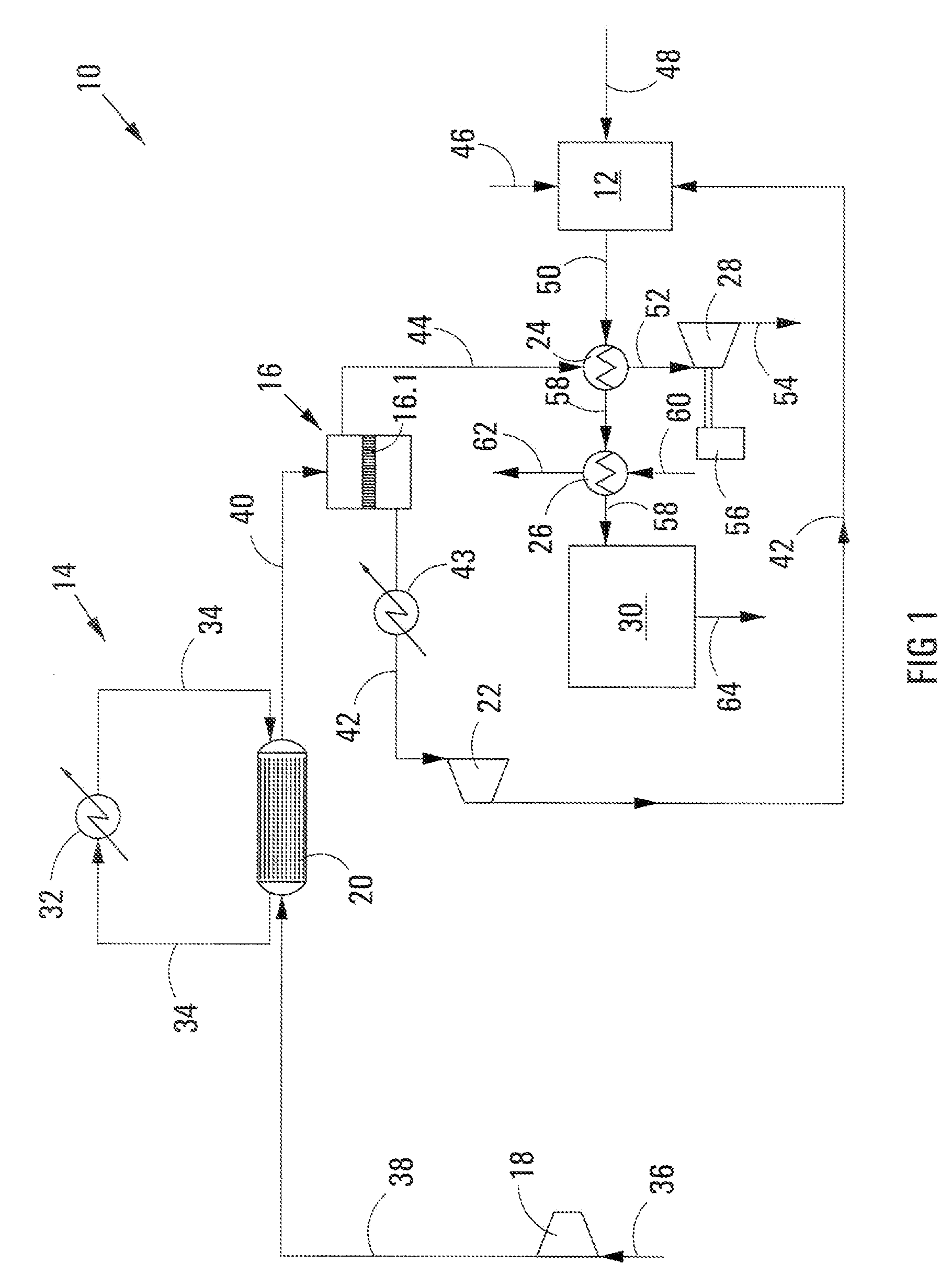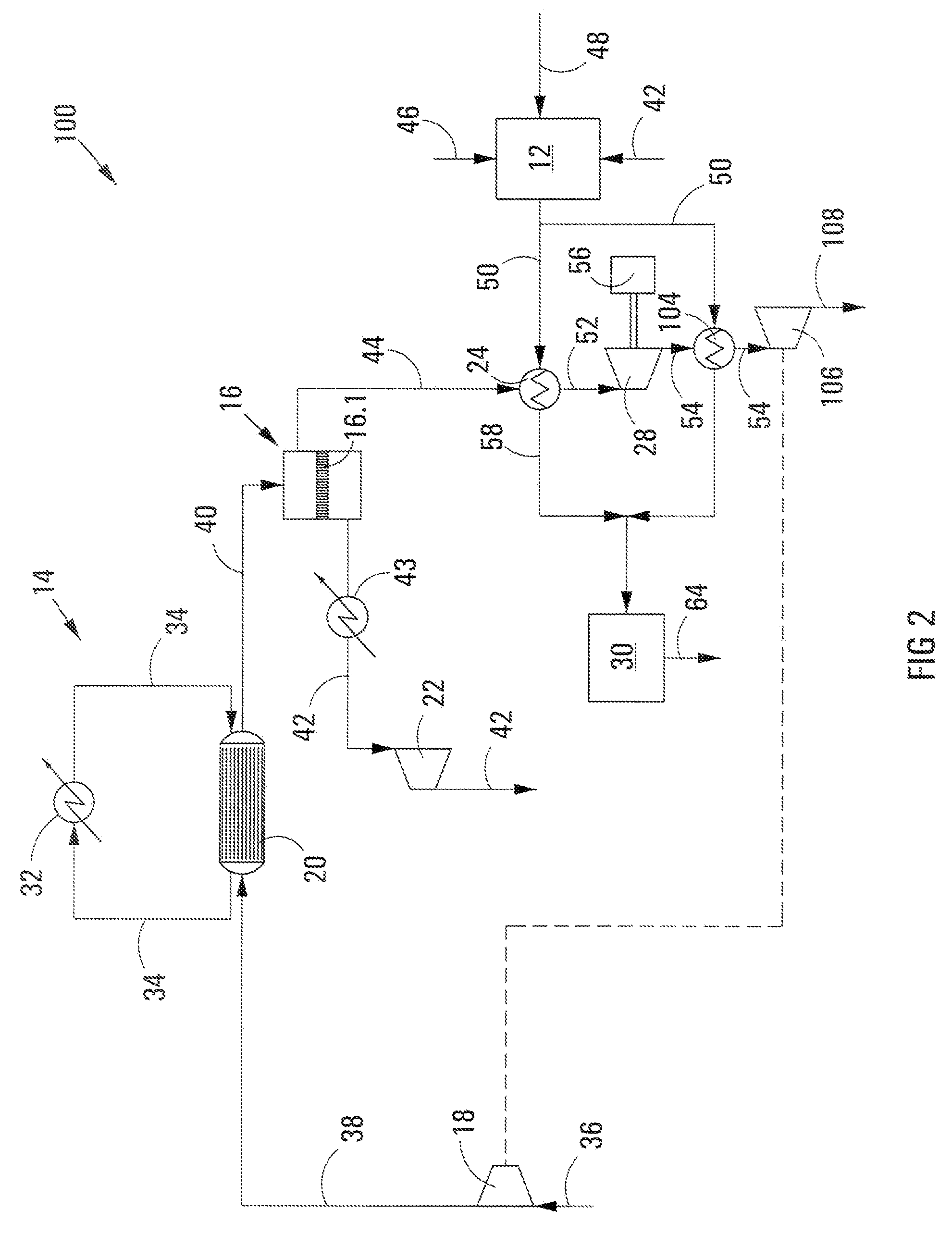Process for co-producing synthesis gas and power
a technology of synthesis gas and co-production, which is applied in the direction of combustible gas production, machine/engine, separation process, etc., can solve the problems of carbon dioxide emissions, significant carbon dioxide emissions, and energy-intensive synthesis gas production processes
- Summary
- Abstract
- Description
- Claims
- Application Information
AI Technical Summary
Benefits of technology
Problems solved by technology
Method used
Image
Examples
Embodiment Construction
[0017]According to the invention, there is provided a process for co-producing synthesis gas and power, the process including:
[0018]in a synthesis gas generation stage, producing a synthesis gas comprising at least CO and H2 by reacting a hydrocarbonaceous feedstock with oxygen, the synthesis gas being at a first temperature;
[0019]in an air separation stage, separating air from a compressed air stream by means of at least one ion transport membrane unit thereby producing a permeate stream consisting predominantly of oxygen and a reject stream of oxygen-depleted air at a second temperature which is lower than the first temperature;
[0020]indirectly heating the reject stream of oxygen-depleted air with the synthesis gas and at least partially expanding said heated reject stream of oxygen-depleted air through at least one turbine to generate power, producing an at least partially expanded reject stream of oxygen-depleted air; and
[0021]feeding at least a portion of the permeate stream co...
PUM
 Login to View More
Login to View More Abstract
Description
Claims
Application Information
 Login to View More
Login to View More - R&D
- Intellectual Property
- Life Sciences
- Materials
- Tech Scout
- Unparalleled Data Quality
- Higher Quality Content
- 60% Fewer Hallucinations
Browse by: Latest US Patents, China's latest patents, Technical Efficacy Thesaurus, Application Domain, Technology Topic, Popular Technical Reports.
© 2025 PatSnap. All rights reserved.Legal|Privacy policy|Modern Slavery Act Transparency Statement|Sitemap|About US| Contact US: help@patsnap.com



